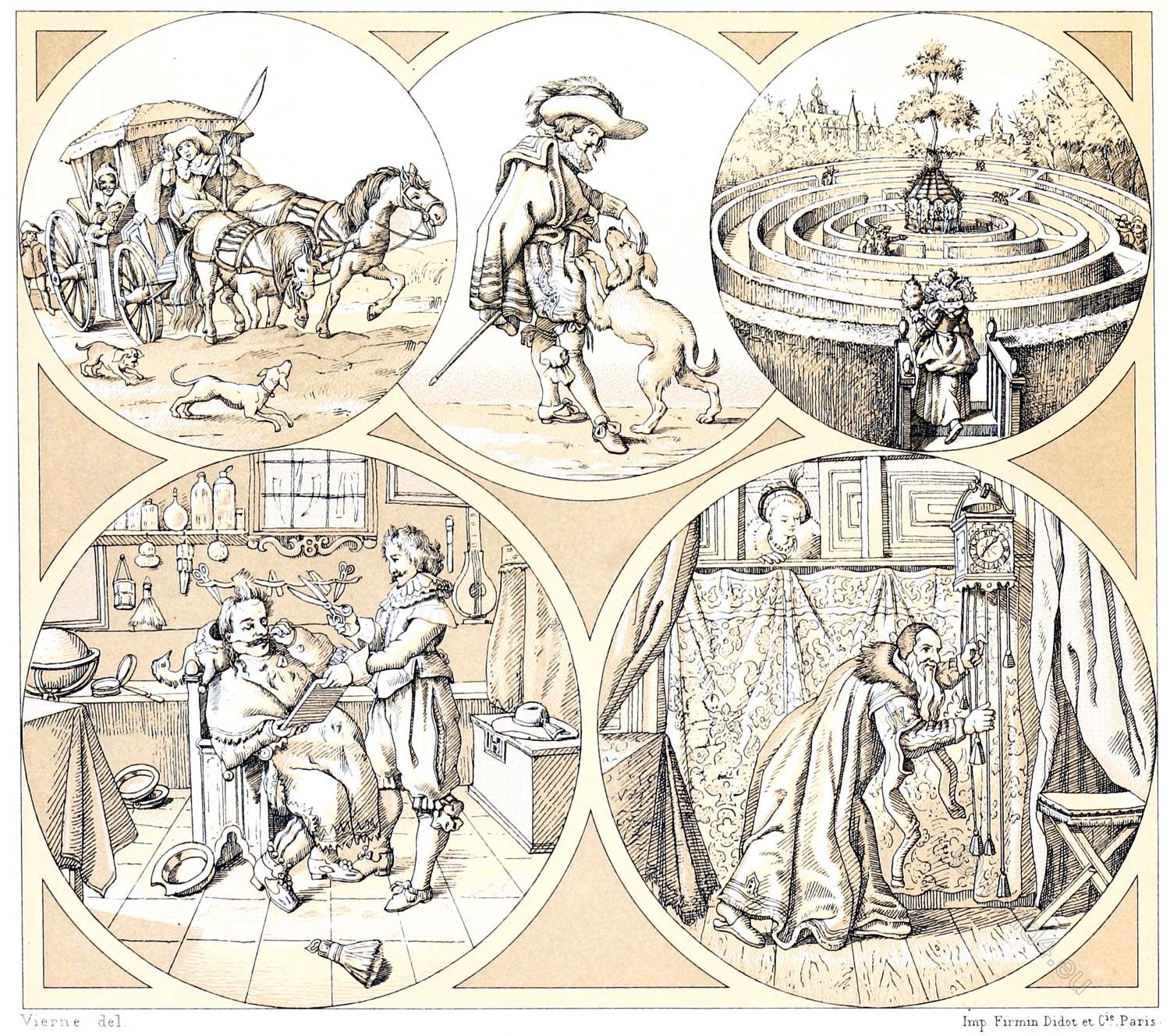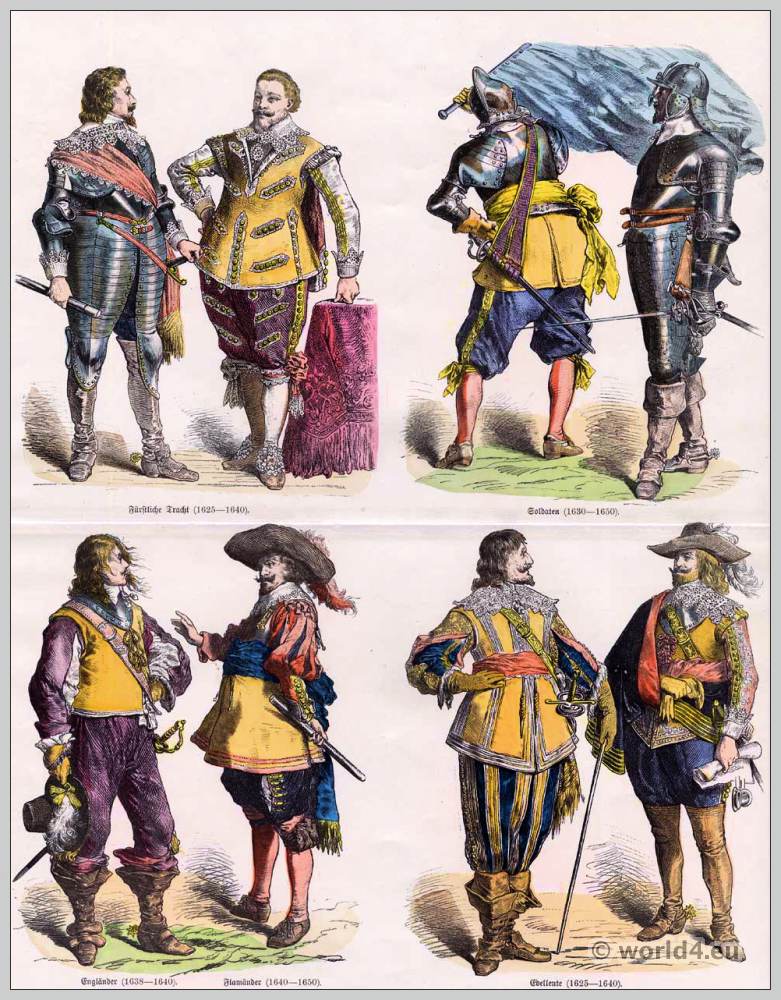
1, 2, 3,
4, 5,
HOLLAND. XVII. CENTURY
THE CAROSSES. THE HEDGE MAZES. TYPES FROM THE NOBLE, BOURGEOIS AND MERCHANT WORLD.
The scenes depicted here are taken from the work of the Dutch moralist Jacob Cats Sinn-Reicher. His vignettes are as important for the history of manners and costume in the Netherlands as the engravings of Abraham Bosse are for those of France.
The coach.
No. 1. The body consists of a box with the floor resting directly on the axles. The roof is supported by four pillars with curtains between them. Incidentally, carriages suspended in springs, an invention of the Dutchman Wilhelm Boonen, had already been in use since 1564.
No. 2. The young cavalier petting his dog wears a wide-brimmed felt hat with a large feather; ruff; doublet, coat; pludder trousers; stockings with garters; shoes with ribbon bows.
No. 3. The labyrinth in our illustration, with a small town in the background, shows a kiosk in the middle of its wanderings.
No. 4. The interior of a barber’s shop. The owner, dressed in a ruff à la confusion, a doublet with epaulets à la Henry IV and cut-out shoes, is busy doing the hair of a gentleman to whom he holds a hand mirror. A chest, a globe, utensils on the walls and a guitar make up the furnishings of the room.
No. 5. In a room richly decorated with carpets and curtains, an old gentleman winds a wall clock while a young lady watches him through a sliding window.
Cf. Michiels, Alfred (1813-1892), Histoire de la peinture flamande et hollandaise, 1847. – Esquiros, La Néerlande et la vie hollandaise, 1855.
Source: History of Costume in Chronological Development by Auguste Racinet. Edited by Adolf Rosenberg. Berlin 1888.






